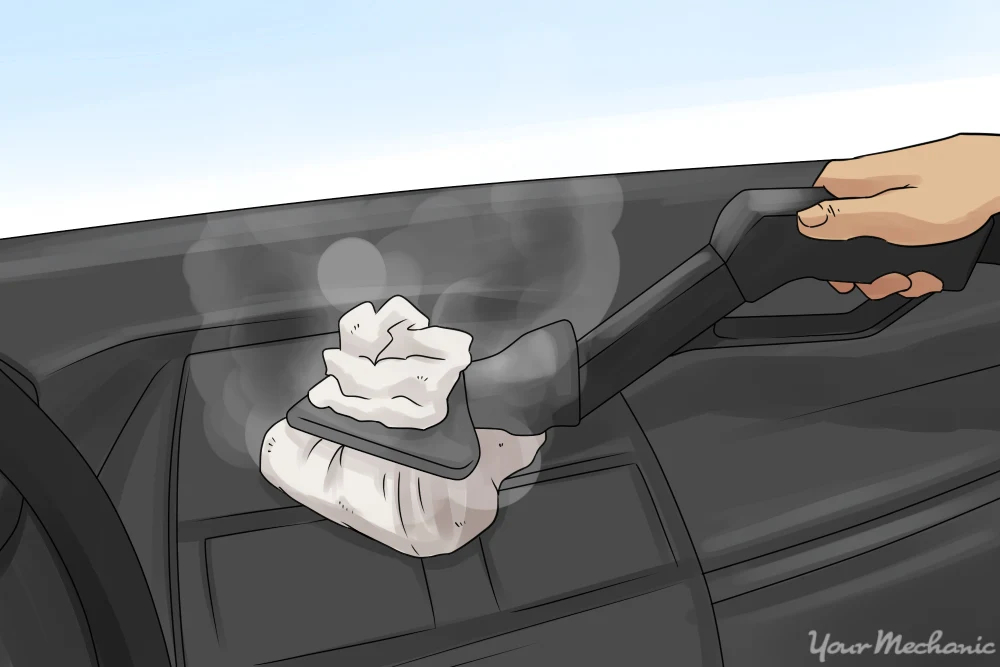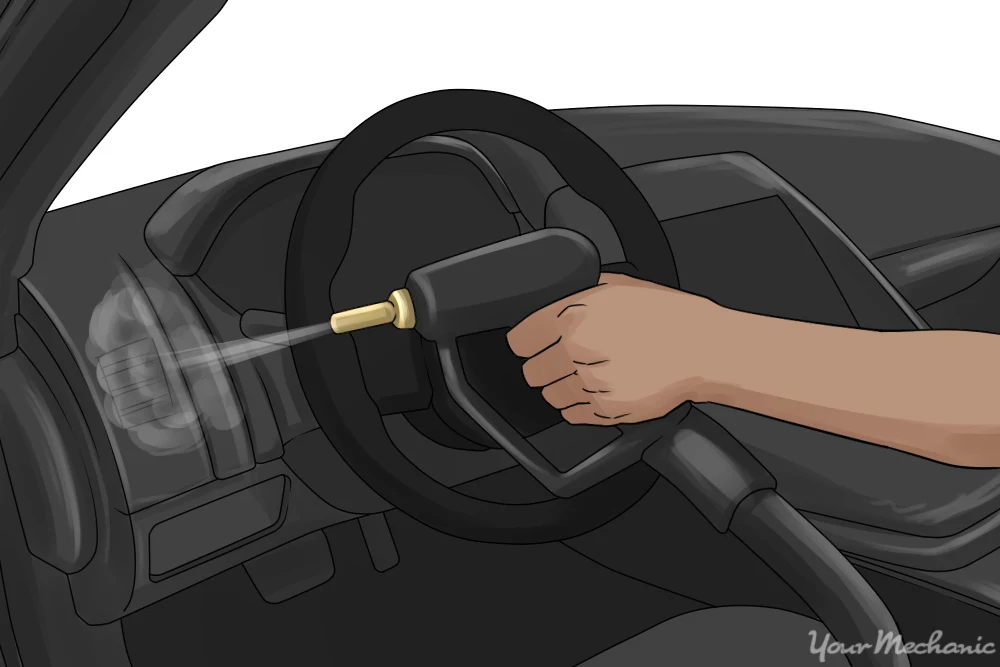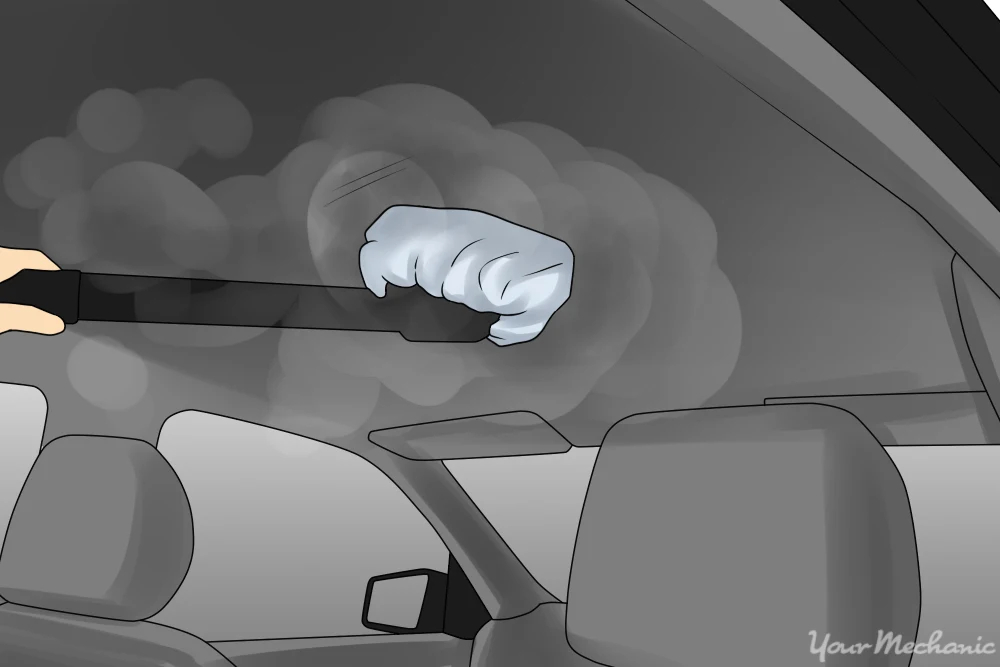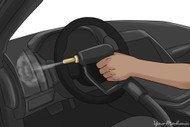How to Use a Steam Cleaner to Detail a Car
Posted by Jason Unrau on Oct 01, 2019
Regardless of how you use your vehicle, the interior can get dirty and soiled over time. Your car can get dirty in any of the following ways:
- Dyes and dirt transferred to the seats from clothing
- Oil and dirt left on the steering wheel, shifter handle, and radio controls from your hands
- Oil left on the headrest from hair
- Dirt and grime carried in on shoes or boots
A steam cleaner is a great solution for soiled car interiors, whether heavily or lightly soiled. Steam is an excellent option to clean your car for the following reasons:
- Steam eliminates the need to use harmful chemicals
- Steam penetrates deep into fabric and upholstery, not just on the surface
- Steam can be useful to clean the upholstery in hard-to-reach places
- Steam can be used to clean all kinds of surfaces safely
- Steam softens and lifts dirt so you don’t have to scrub a stain for hours
- Steam cleaning can be done at home to quickly clean dirt before it leaves a permanent stain.
A steam cleaner is also cost effective as it only uses water to clean and takes a fraction of the time that other methods of cleaning usually require.
Here’s how to use a steam cleaner to detail your car.
Part 1 of 5: Clean carpets and fabric with steam
Usually, carpets and car upholstery are cleaned with a carpet cleaner that is mistakenly referred to as steam cleaning. However, carpet cleaners use water and chemical-laden cleaning solutions to clean the fabric. The cleaning solution may be expensive, the cleaning solution can leave rings on fabric upholstery, and the cleaners can leave harmful chemical residue in your vehicle.
Steam cleaning is safe and effective alternative to chemical use.
Materials Needed
- Steam cleaner
- Triangular brush attachment for steam cleaner
- Vacuum cleaner
Step 1: Vacuum the upholstery and carpets. Thoroughly remove as much dirt and dust from the carpet and seats as possible so that the steam cleaner will be most effective.
- Tip: For best results, use a crevice vacuum tool to get into tight areas around the seats and the pedals.
Step 2: Attach a triangular brush to the steam cleaner. Attach a bristled triangular tool to the steam cleaner. The bristled tool will agitate the carpet or fabric, lifting out any dirt that the steam loosens from deep in the upholstery.

Step 2: Steam the carpet using the triangular brush attachment. Rub the bristles over the carpet as you move the tool slowly over the floor.
Clean all the carpeted areas you can reach with the triangular tool. Make overlapping passes to ensure you clean every spot on the floor.
- Tip: Move quickly enough that the steam doesn’t collect in one place long enough to make the carpet wet.
- Tip: You can use a crevice tool later to get into tight spots that the triangular tool doesn’t fit.
Step 3: Steam clean your fabric seats. Steam clean your fabric seats with the triangular tool on your steam cleaner. Make overlapping passes with the bristles against the seat.
- Tip: Brush lightly on the seats so you don’t cause pilling to the fabric.
Step 4: Vacuum the carpets. After steam cleaning, vacuum the carpets again to remove any dirt that has come loose from the carpet and seats.
- Tip: Steam cleaning works very well on salt stains left on carpets from winter conditions.
Part 2 of 5: Clean leather, plastic, and vinyl with a steam cleaner
To clean your leather, plastic, and vinyl components with a steam cleaner, you’ll need to use a soft attachment that does not scratch the interior finish.
Materials Needed
- Cloth or foam attachment for steam cleaner
- Steam cleaner
- Triangular brush attachment for steam cleaner
Step 1: Use a cloth or foam attachment on your steam cleaner. A microfiber cloth works best for delicate surfaces as it does not cause scratches and it traps dirt in its fibers so it doesn’t spread around.
- Tip: If you don’t have a cloth attachment for your steam cleaner, you can wrap a microfiber cloth around a carpet attachment and use it lightly on plastic and vinyl.

Step 2: Clean plastic and vinyl. Pass the attachment lightly over the plastic and vinyl parts of your car’s interior including the dash, radio display, and the area around the gearshift.
The fabric on the attachment will absorb and carry away dust, dirt, and oils from your car’s interior.
- Tip: Use the steam cleaner on your steering wheel to remove any oil left on the wheels by your hands.
Step 2: Clean leather seats. Use the carpet attachment wrapped with a microfiber cloth to clean leather seats.
Cover the bristles so they don’t scratch the leather.
Pass the steam cleaner gently over the leather to loosen dirt while the microfiber cloth carries it away.
In addition to cleaning it, the steam also rejuvenates and moisturizes the leather.
- Tip: Steam cleaners are the best way to remove dye transfer stains from leather. Simply use the steam cleaner in the same way as you remove dirt from leather.
Part 2 of 5: Clean hard to reach places with the steam cleaner
Use a steam cleaner with a crevice tool or a steam jet nozzle to clean areas that are otherwise inaccessible by hand.
Materials Needed
- Crevice tool for steam cleaner
- Crevice tool for vacuum cleaner
- Steam cleaner
- Vacuum cleaner
Step 1: Use a steam cleaner. Place the steam cleaner tip as close to the dirty area as possible.
You can use the steam cleaner tip to get into the dash vents, between the seats and the console, into cracks and crevices in plastic trim parts, and inside deep door pockets and cup holders where other cleaning methods can’t reach.

Apply the steam directly onto the dirty area.
Step 2: Dry the area. Wipe the area with a clean microfiber cloth if you can access it, but it’s not critical.
The steam will remove the dirt and dust from the areas that you typically can’t reach.
Step 2: Vacuum the area. Once you’ve steam cleaned heavily soiled areas such as cup holders and door pockets, vacuum them with a crevice tool to remove the loosened dirt.
Part 4 of 5: Clean the headliner with steam
The headliner is an area that does not need to be cleaned often, but it does accumulate dust and dirt from airborne particles or physical contact.
The headliner is made of pressed board with foam glued to it, then fabric glued to the surface of the foam. If the glue is softened or wetted, it can come loose and hang down, and the headliner will need to be replaced. Careful cleaning of the headliner is essential to avoid damaging or tearing it.
Materials Needed
- Microfiber cloth
- Steam cleaner
- Vacuum cleaner
Step 1: Prepare the steam cleaner. Use a flat, non-abrasive tip covered in a microfiber cloth.

Step 2: Steam clean the headliner. Pass the steam cleaner over the headliner fabric without staying in one place for too long.
- Note: To make sure you don’t damage the glue between the layers. move the steam cleaner over the headliner twice as fast as you cleaned the seats and carpet.
Overlap your passes with the steam cleaner just enough to ensure you don’t miss any spots. If you overlap your passes too much or clean one area too many times, the layers can separate and the headliner can be damaged or the fabric can sag.
Part 5 of 5: Clean windows with the steam cleaner
The steam cleaner can be used to get stubborn sap, bugs, and tar off your exterior windows. The steam softens the substance so that it can be removed easily.
Materials Needed
- Microfiber cloth
- Steam cleaner
- Squeegee attachment for steam cleaner
Step 1: Prepare the steam cleaner. Equip your steam cleaner with a squeegee attachment.
If you don’t have a squeegee attachment, use a wide attachment covered in a microfiber cloth for similar results.

Step 2: Steam the window. Pass the steam cleaner over the window, starting from the top and working your way down. Make overlapping passes with the steam cleaner.
- Tip: If you’re cleaning the windshield, you can also work with half the glass at a time, working in horizontal lines from the top down.
If you have a squeegee attachment, the squeegee will remove contaminants that have been loosened from the glass with steam.
Step 2: Clean the squeegee. Wipe the squeegee edge with a clean cloth after each pass so you don’t transfer the dirt back onto the glass.
- Tip: If you are using a microfiber cloth on a flat attachment, turn or reposition the cloth if it gets too dirty.
Repeat the process for all your car windows, to get the cleanest, clearest windows possible.
Using a steam cleaner on your car’s carpet, leather trim, seats and upholstery doesn’t just leave you with a clean car interior — it also sanitizes your car, killing bacteria that can cause illness and odors.
You can use a steam cleaner to clean items inside your car as well, such as child safety seats and seat covers.
Source - https://www.yourmechanic.com/article/how-to-use-a-steam-cleaner-to-detail-a-car-by-jason-unrau

